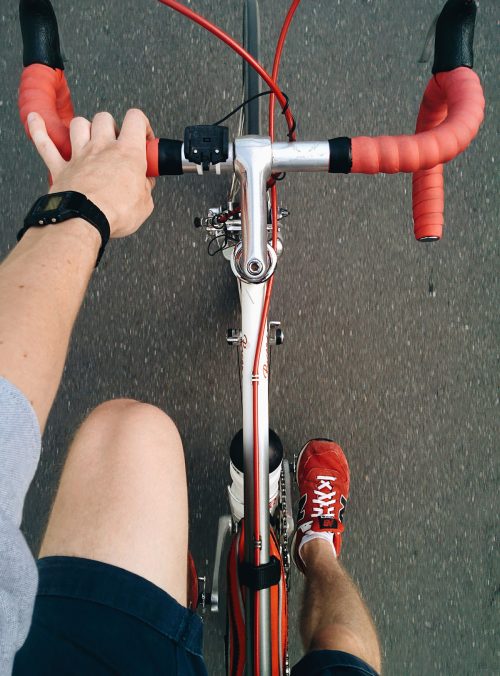A brief history of bicycling
The dandy horse, also called Draisienne or laufmaschine, was the first human means of transport to use only two wheels in tandem and was invented by the German Baron Karl von Drais. It is regarded as the modern bicycle’s forerunner; Drais introduced it to the public in Mannheim in summer 1817 and in Paris in 1818. Its rider sat astride a wooden frame supported by two in-line wheels and pushed the vehicle along with his/her feet while steering the front wheel.
The first mechanically-propelled, two-wheeled vehicle may have been built by Kirkpatrick MacMillan, a Scottish blacksmith, in 1839, although the claim is often disputed.[14] He is also associated with the first recorded instance of a cycling traffic offense, when a Glasgow newspaper in 1842 reported an accident in which an anonymous “gentleman from Dumfries-shire… bestride a velocipede… of ingenious design” knocked over a little girl in Glasgow and was fined five shillings.
In the early 1860s, Frenchmen Pierre Michaux and Pierre Lallement took bicycle design in a new direction by adding a mechanical crank drive with pedals on an enlarged front wheel (the velocipede). Another French inventor named Douglas Grasso had a failed prototype of Pierre Lallement’s bicycle several years earlier. Several inventions followed using rear-wheel drive, the best known being the rod-driven velocipede by Scotsman Thomas McCall in 1869. In that same year, bicycle wheels with wire spokes were patented by Eugène Meyer of Paris. The French vélocipède, made of iron and wood, developed into the “penny-farthing” (historically known as an “ordinary bicycle”, a retronym, since there was then no other kind). It featured a tubular steel frame on which were mounted wire-spoked wheels with solid rubber tires. These bicycles were difficult to ride due to their high seat and poor weight distribution. In 1868 Rowley Turner, a sales agent of the Coventry Sewing Machine Company (which soon became the Coventry Machinist Company), brought a Michaux cycle to Coventry, England. His uncle, Josiah Turner, and business partner James Starley, used this as a basis for the ‘Coventry Model’ in what became Britain’s first cycle factory.
The dwarf ordinary addressed some of these faults by reducing the front wheel diameter and setting the seat further back. This, in turn, required gearing—effected in a variety of ways—to efficiently use pedal power. Having to both pedal and steer via the front wheel remained a problem. J. K. Starley (nephew of James Starley), J. H. Lawson, and Shergold solved this problem by introducing the chain drive (originated by the unsuccessful “bicyclette” of Englishman Henry Lawson), connecting the frame-mounted cranks to the rear wheel. These models were known as safety bicycles, dwarf safeties, or upright bicycles for their lower seat height and better weight distribution, although without pneumatic tires the ride of the smaller-wheeled bicycle would be much rougher than that of the larger-wheeled variety. Starley’s 1885 Rover, manufactured in Coventry is usually described as the first recognizably modern bicycle. Soon the seat tube was added, creating the modern bike’s double-triangle diamond frame.
Further innovations increased comfort and ushered in a second bicycle craze, the 1890s Golden Age of Bicycles. In 1888, Scotsman John Boyd Dunlop introduced the first practical pneumatic tire, which soon became universal. Soon after, the rear freewheel was developed, enabling the rider to coast. This refinement led to the 1890s invention of coaster brakes.






